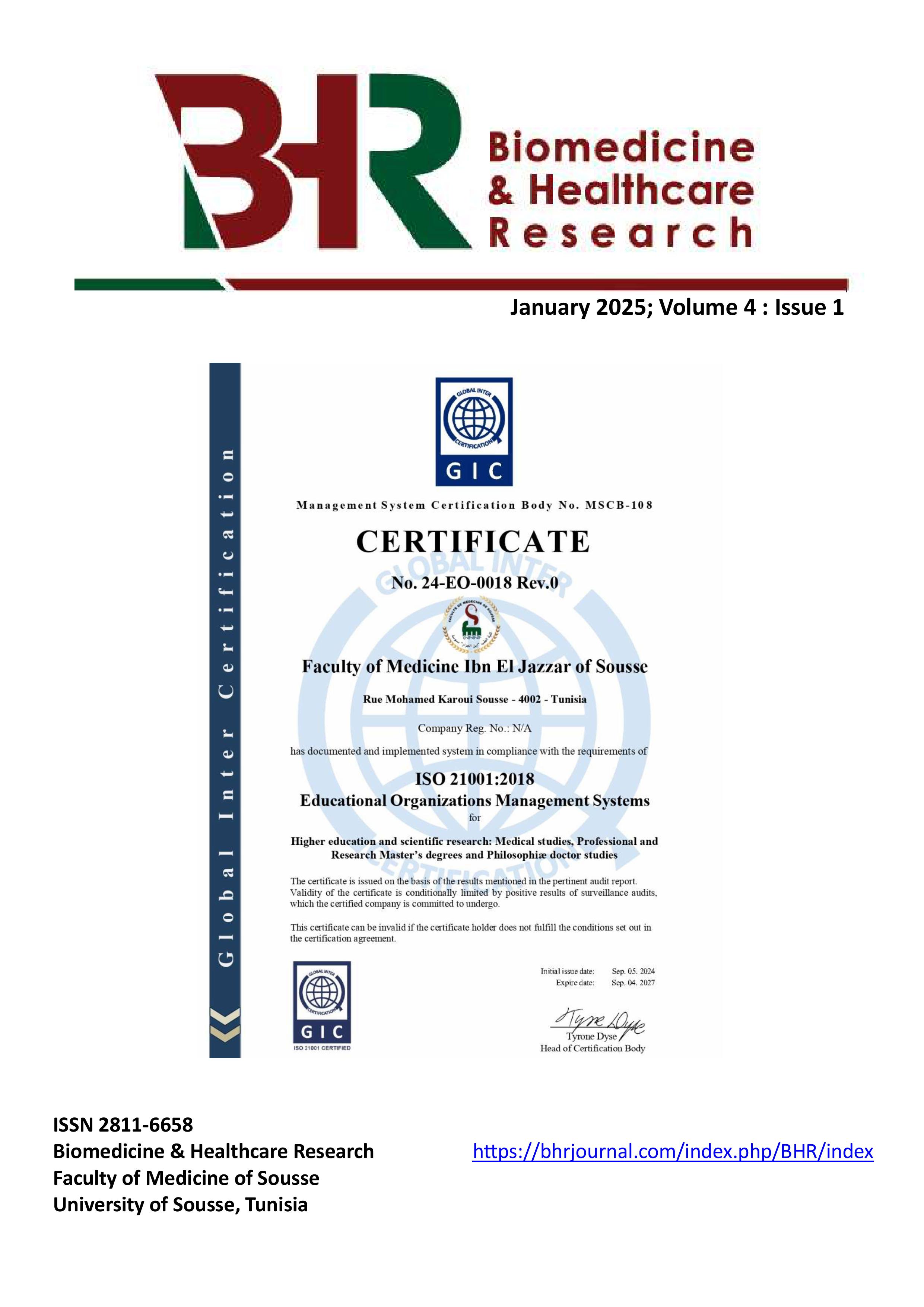Clinical characteristics and management outcomes of acromegaly in a Tunisian university hospital: A retrospective study
DOI :
https://doi.org/10.71599/bhr.v4i1.129Mots-clés :
Acromegaly, Pituitary adenoma, Somatostain analog, ComorbiditiesRésumé
Introduction: Acromegaly is a rare endocrine disorder characterized by excessive growth hormone (GH) secretion, primarily caused by pituitary adenomas. If untreated, it leads to significant morbidity and increased mortality. This study investigates the clinical characteristics and treatment outcomes of acromegaly patients in a Tunisian University Hospital.
Methods: We conducted a retrospective review of medical records for patients diagnosed with acromegaly in the Endocrinology Department of a University Hospital in Central Tunisia over 20 years. Data on clinical features, imaging, comorbidities, and treatment outcomes were collected and analyzed.
Results: Among 41 patients included, the mean age at diagnosis was 37±11 years. MRI revealed macroadenomas in 93.9% of cases, with 58% displaying invasiveness. Adenomas co-secreting GH and prolactin were larger (35 mm vs. 21 mm; p=0.031) and more invasive (80% vs. 23%; p=0.02) compared to GH-only adenomas. Diabetes mellitus was the most common comorbidity (43%), and affected patients were older (42 vs. 34 years; p=0.03). Surgical treatment, primarily via the transsphenoidal route, was performed in 78% of patients. Medical therapy, including somatostatin analogs and dopamine agonists, was administered to 48%, with Lanreotide being the most frequently used agent. Multimodal therapy achieved a cure rate of 29%.
Conclusion: Despite therapeutic advances, managing acromegaly remains challenging. Early diagnosis and individualized treatment strategies are essential to improve patient outcomes.
Téléchargements
Téléchargements
Publiée
Comment citer
Numéro
Rubrique
Licence
(c) Tous droits réservés Yosra Hasni, Sawsen Nouira, Hamza El Fekih, Wiem Saafi, Imen Halloul, Wafa Badr, Ghada Saad, Amel Maaroufi 2025

Ce travail est disponible sous licence Creative Commons Attribution - Pas d'Utilisation Commerciale - Pas de Modification 4.0 International.





